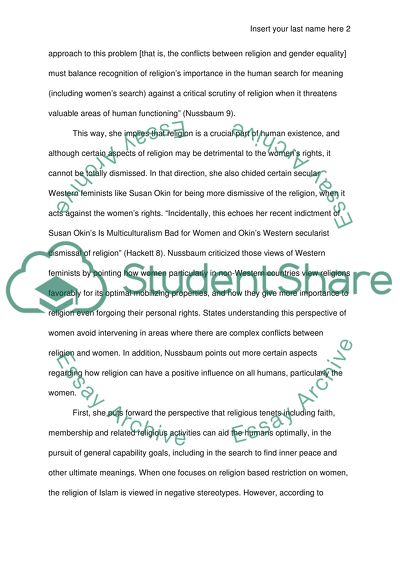Cite this document
(“Nussbaum on Religion and Women's Rights Essay Example | Topics and Well Written Essays - 1500 words”, n.d.)
Nussbaum on Religion and Women's Rights Essay Example | Topics and Well Written Essays - 1500 words. Retrieved from https://studentshare.org/philosophy/1444570-nussbaum-on-religion-and-women-rights
Nussbaum on Religion and Women's Rights Essay Example | Topics and Well Written Essays - 1500 words. Retrieved from https://studentshare.org/philosophy/1444570-nussbaum-on-religion-and-women-rights
(Nussbaum on Religion and Women'S Rights Essay Example | Topics and Well Written Essays - 1500 Words)
Nussbaum on Religion and Women'S Rights Essay Example | Topics and Well Written Essays - 1500 Words. https://studentshare.org/philosophy/1444570-nussbaum-on-religion-and-women-rights.
Nussbaum on Religion and Women'S Rights Essay Example | Topics and Well Written Essays - 1500 Words. https://studentshare.org/philosophy/1444570-nussbaum-on-religion-and-women-rights.
“Nussbaum on Religion and Women'S Rights Essay Example | Topics and Well Written Essays - 1500 Words”, n.d. https://studentshare.org/philosophy/1444570-nussbaum-on-religion-and-women-rights.


